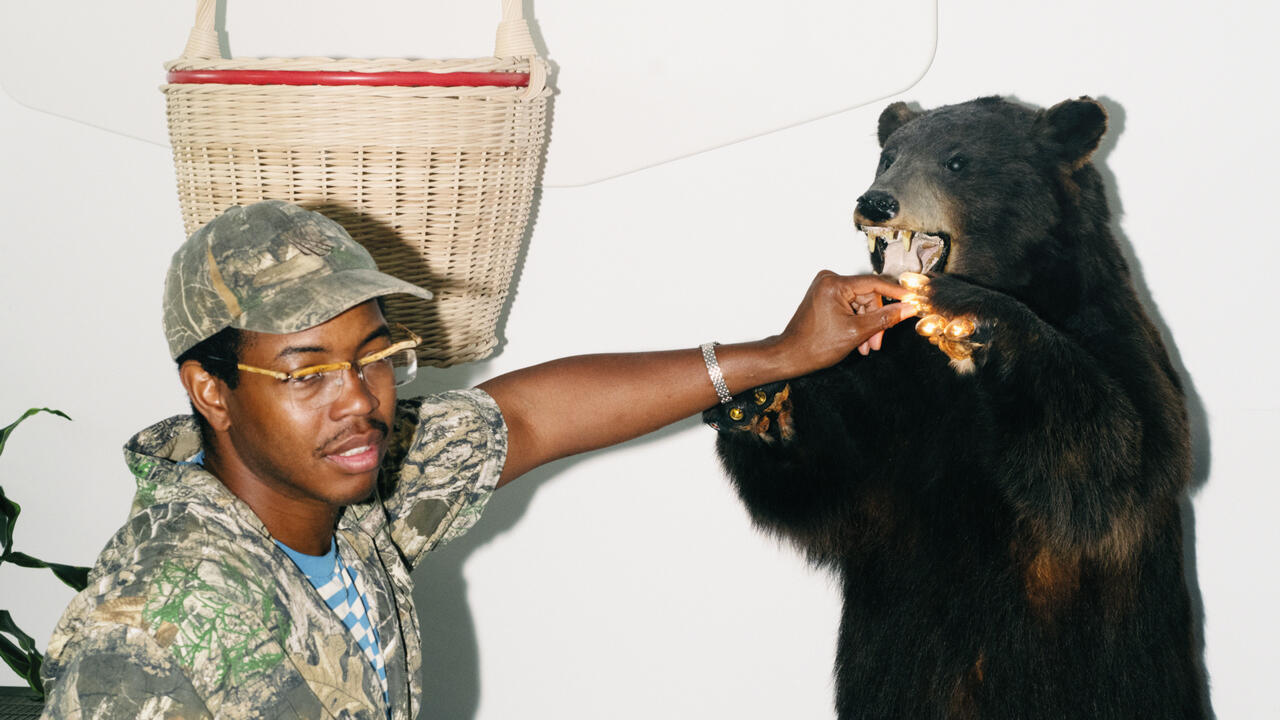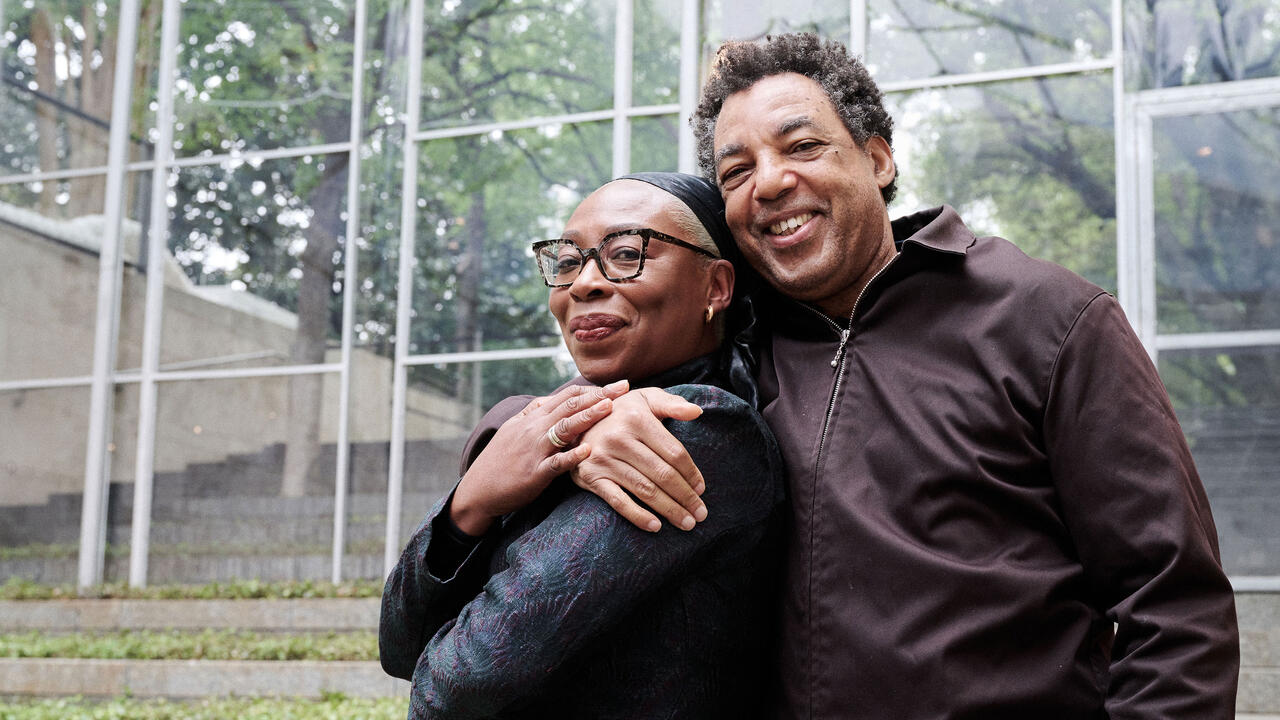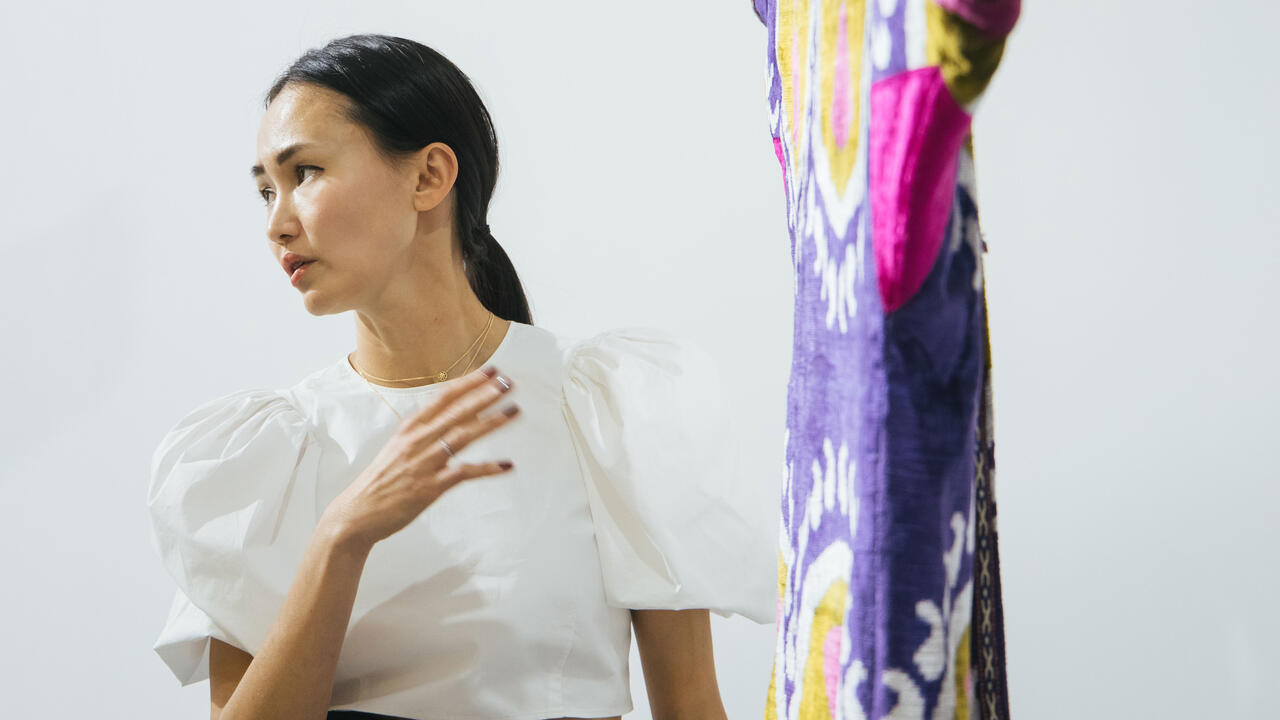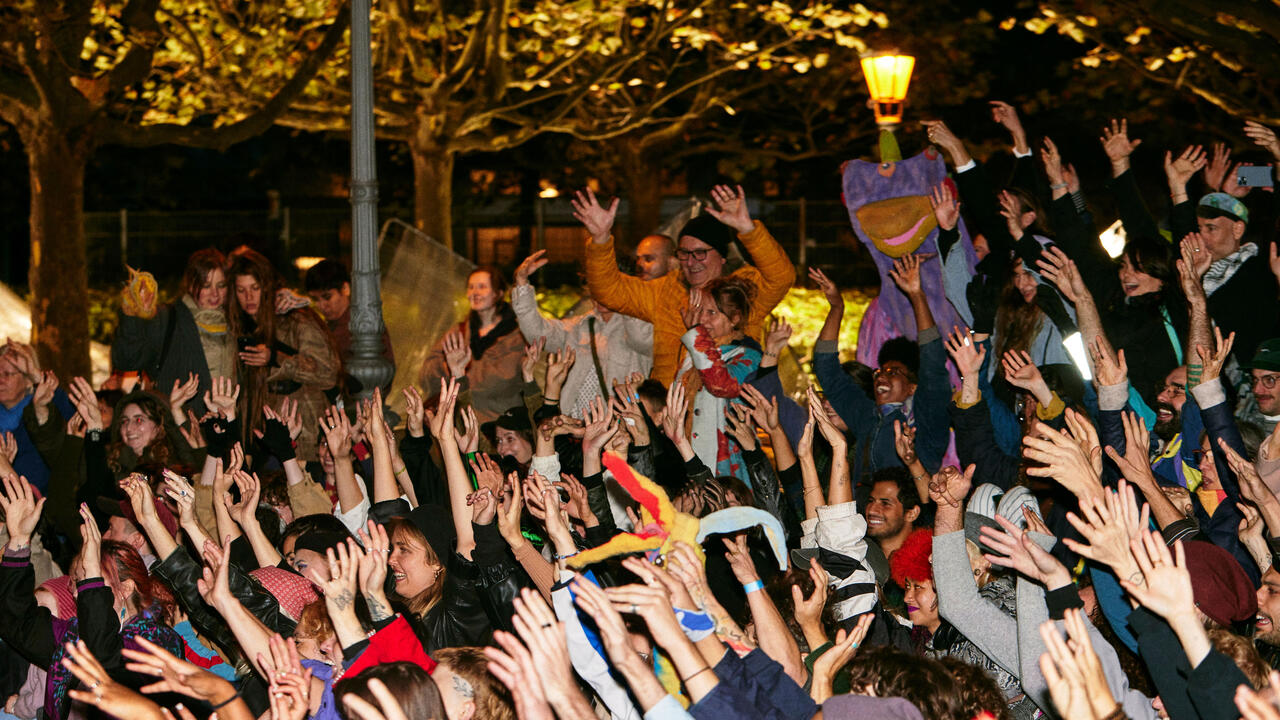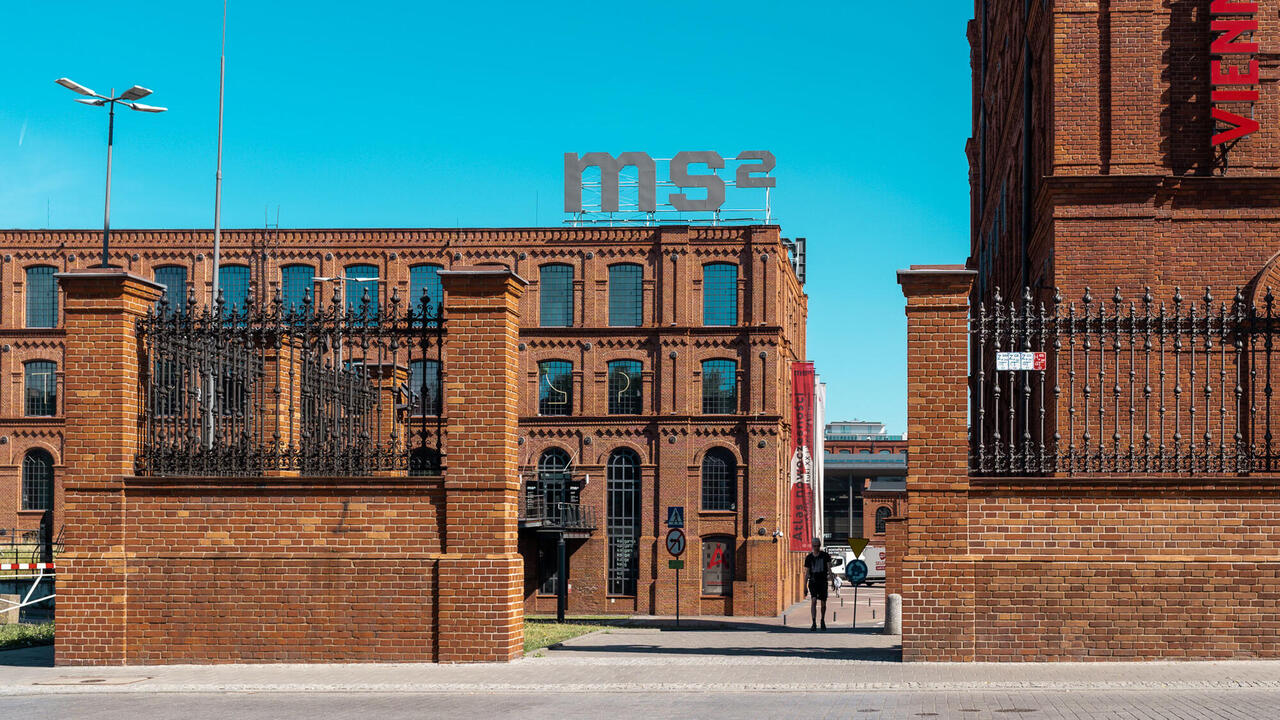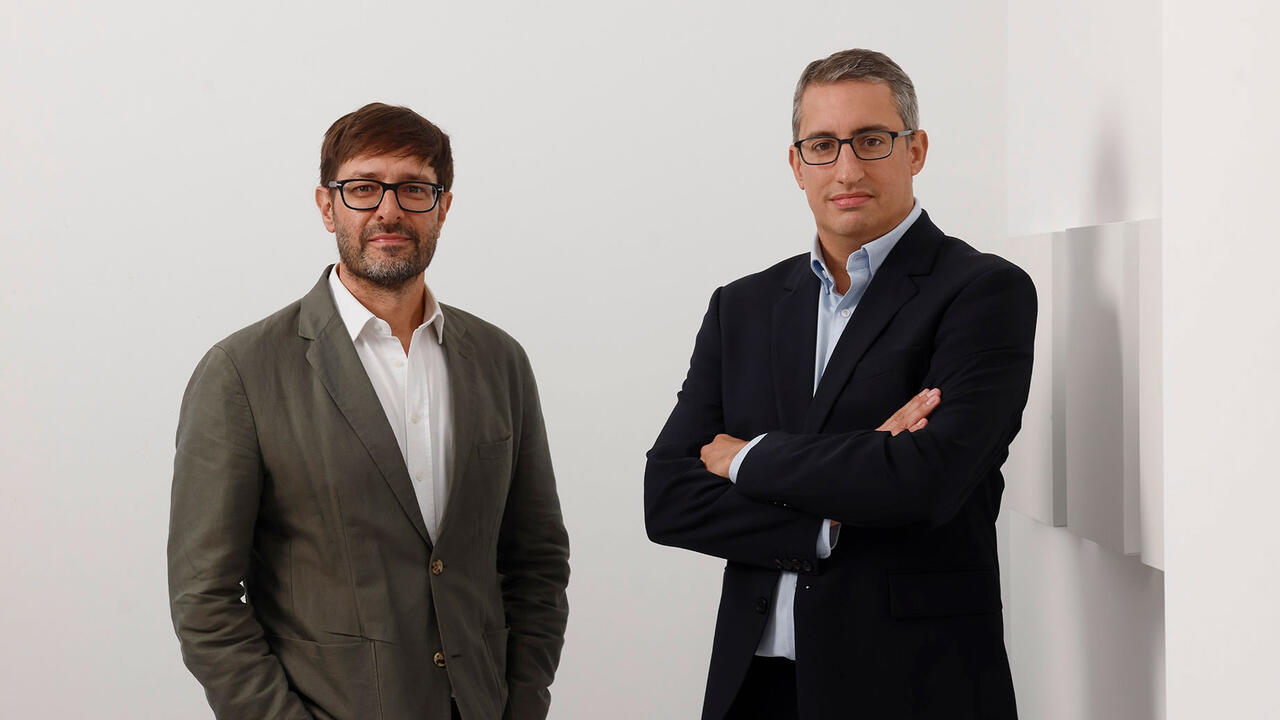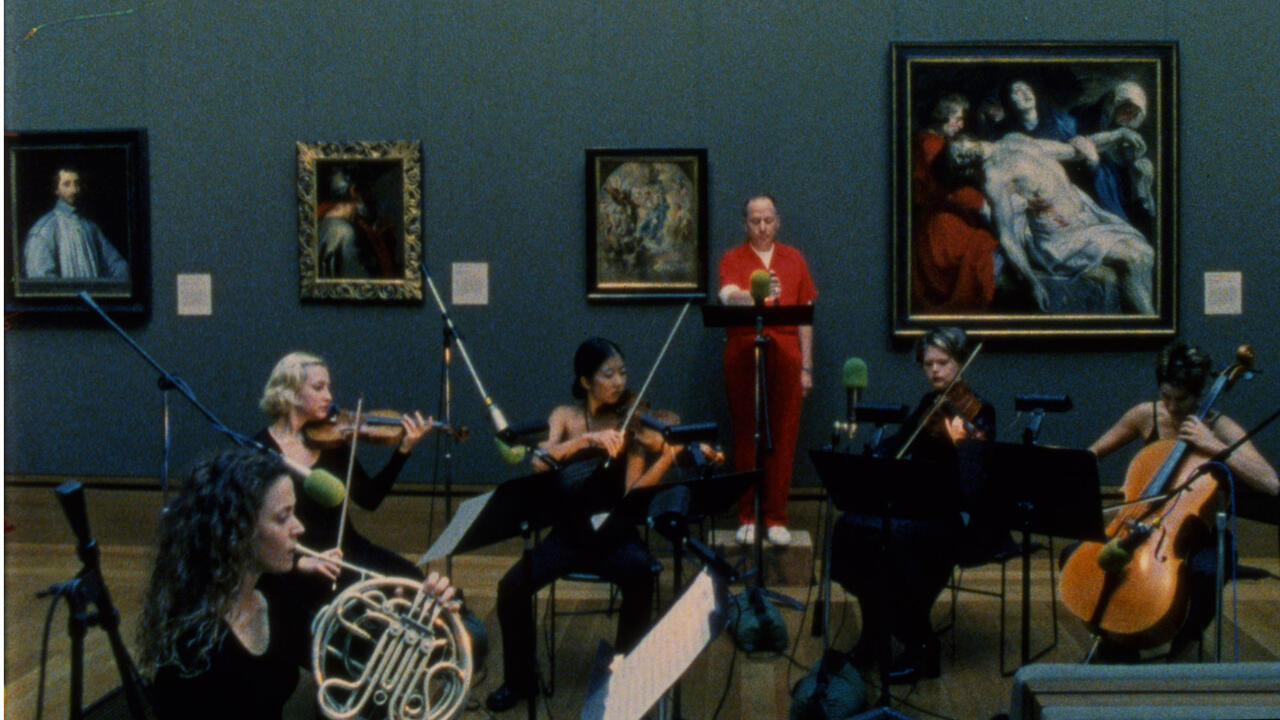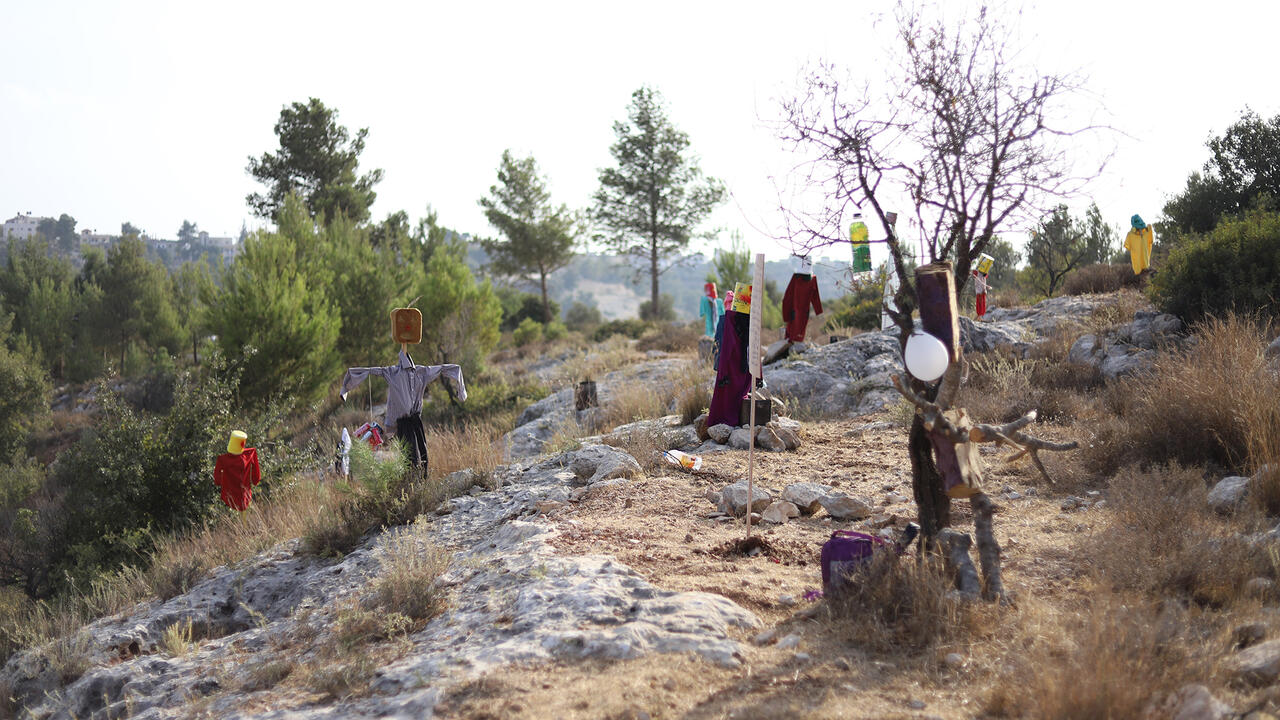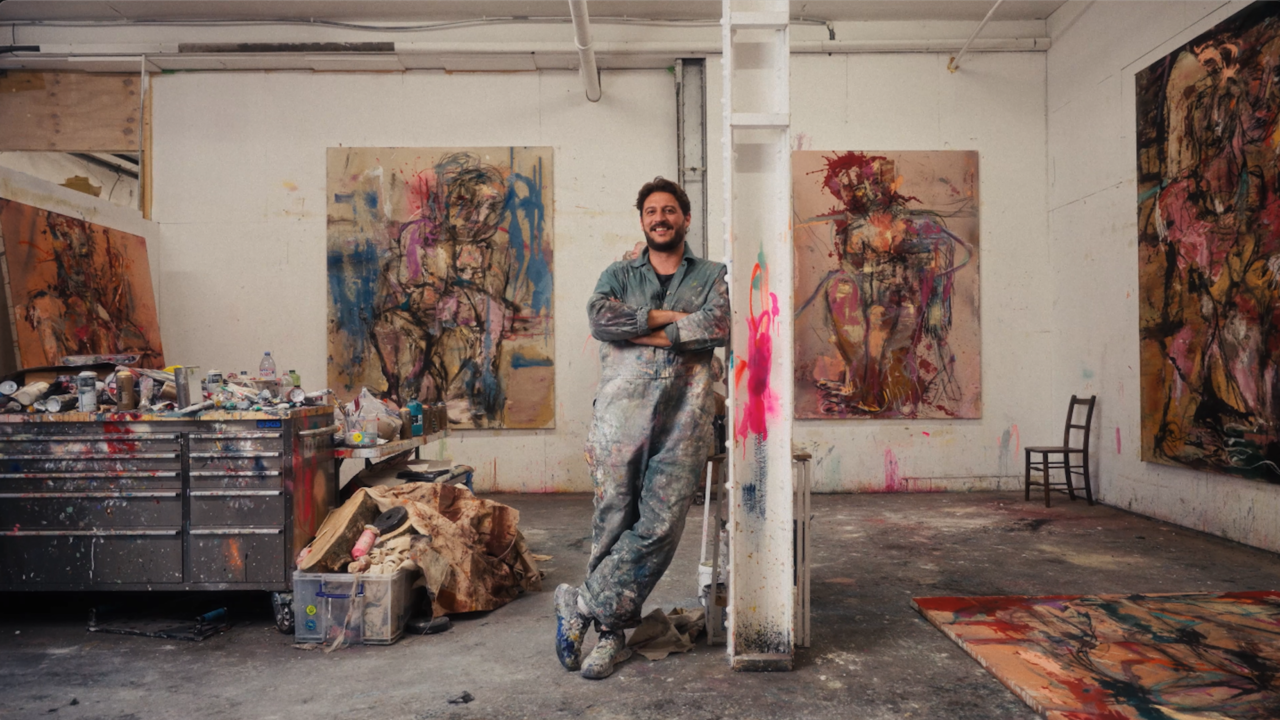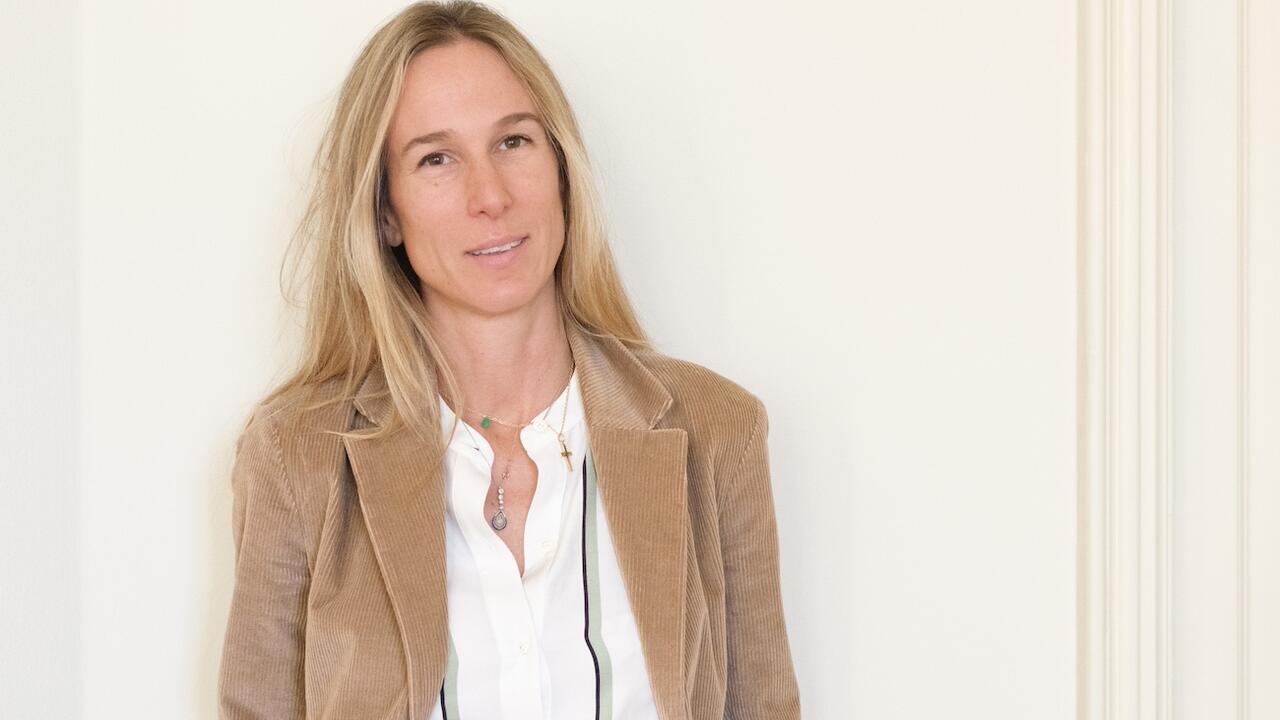Inside the Box: Haim Steinbach at Magasin III's New Space
The Israeli-born American artist talks about his show inaugurating the Stockholm foundation's satellite space in Jaffa
The Israeli-born American artist talks about his show inaugurating the Stockholm foundation's satellite space in Jaffa

The satellite space of Stockholm's Magasin III opened on 20 January 2018 in the renovated ground floor of an Ottoman stone house, between a hairdresser and a houseware shop in Jaffa, greater Tel Aviv. Both of its glass fronts face two small parallel streets, enabling the gallery to be seen from the outside at all times.
The programme was launched with a solo exhibition by Israel-born, American artist Haim Steinbach. 'zerubabbel', Steinbach's first solo show in Israel, contains a large, yellow wall painting and five glass boxes, four of which display metal Pantone storage boxes on a glass shelf. A fifth wooden vitrine contains a wooden bocce ball. There are two more colour samples with their names painted on opposite walls: pantonecoolgrey 10 (2016) and tuttifrutti (2016), a sample given by the American paint company Behr. Spectres of earlier perspectives of the painted square - from Kazimir Malevich to Joseph Albers - appear and collapse into the colour samples. The old patina and materiality of the building is pit against the surface of the multiple - empty, new and shiny. It's a movement between the skin-deep and the secretive.

Tal Sterngast In your works, everyday objects undergo a transition, merging artefact with product, nature with sculpture and painting with architecture. This has been characterized in different ways over the years: as semiotic analogy, or a focus on the ready-made. What's in the Pantone boxes?
Haim Steinbach Secrets - there are mysterious things inside the box. The boxes are made by Pantone, the company behind the scale, like a musical scale or ruler, through which to identify and calibrate colours. Their system has become a point of reference globally for paint stores and graphic designers as a way to communicate about colour.

TS You are making colour an object. Since 1975, you have taken existing materials and presented them on a different plane, encouraging viewers to look at the material or remnant not only as a poetic image, but as a doubling of reality in a physical and cultural sense, as Germano Celant described it in 'Object and Display' (2015). What happens, in your eyes, to the objects when they are rearranged and displayed?
HS The concept of my work is sooner 'object' than 'appropriation'. I work with found, existing objects in the real world. I don't manipulate them, I don't have a meta-concept about how the object is constructed. I let the objects do their thing when they are talking to each other.
When you call a stone a stone, you have already doubled it, linguistically.
When you call a stone a stone, you have already doubled it, linguistically. A stone that was just right for your hand, that you threw at an animal to kill it, was a stone before you even knew to call it that. If you just leave the stone in the yard where it was, that's where it is, but if you take it into your house, or place it on a shelf, because you like it, because you think it relates to you, because you feel it, because you want it, because you want to look at it again, you might not think about it, but this is an act of transference. It's a site/non-site, to use Robert Smithson's term; a readymade, to use Marcel Duchamp's.

TS Another aspect to the colour samples and boxes in this show is that the shelves that you have introduced into art history can be seen in a trajectory of hard-edge abstract painting. The shelf embodies an edge that separates figure from ground. Alongside the use of colour, the shelf is an architectural support - through it, things can be organized, arranged and narrated. This development offered a way out of the dead-end that abstract painting, like Frank Stella's, was inevitably heading to. It opened new possibilities with the concrete objects you were using, and with the work being an object that nevertheless belongs to the wall and relates to it. The shelf came out of painting: out of thinking a picture.
HS Image and pictures are constructed in our imagination and we project them back on to things. With 'pictures', I am not thinking of a painting on the wall; I am thinking of the act of picturing. We project the picture on to the object. With the Pantone boxes, it's another angle of entering. It is a different inquiry, making connection with the system or structure of objectification: colour and object.
With 'pictures', I am not thinking of a painting on the wall; I am thinking of the act of picturing.
You know no one ever wrote about this. For me it would have been very nice if someone talked about it that way. There are lots of interesting articles on my work. But this discourse, this idea of structure within art historical paradigms and thinking, is so essential. The fact that no art historian has ever begun to discuss this is interesting - like the other mind-blocks that have been out there in relation to my work. However, there have been openings too. Like you right now recognizing that aspect and saying it's there. But this is a very basic structural aspect of art making and art thinking.

TS Stella used paint straight out of the can in several series of paintings in the '60s. Some of them, such as his 'Benjamin Moore' series (1962) were commissioned by Andy Warhol, as they related to his idea: 'I want to be a machine.' The Pantone boxes make the connection between the science of colour, without which there would have been no impressionism at the end of the 19th century, and colour samples: the mass-produced, standardised colours as a commercial product.
HS Pantone is selling colour; so, where is the colour? This box is a mass-produced object that is sold and bought. The box for me is a context for a painting because there is a painting on it. We know that when Stella began to make his paintings, he turned them into objects. He used a very thick stretcher making it three dimensional physically. And we know that Donald Judd got to know Stella and had a painting by him on the wall in his house, because he liked what Stella was doing and he shared similar ideas about the object. Judd called them specific objects. Then I came around and asked, 'What is a specific object'?
TS Pantone invites the question of ownership of colours: the absurdity of a corporation 'owning' colour or issuing licenses for them. One interpretation of the arrangement of objects in your shelf works, during the 1980s and '90s, was to understand them as referring to commodities: either celebrating capitalism or being a fragment or metonym of it.
HS They were everyday objects, not commodities. Those who saw commodities were displaying commodities, in their cognition. I saw water in the black pitcher and black in the word 'bold' on a detergent box. It's a presentation of objects. I am referencing my work, supremely black from 1985. By the way, the show has to do with colour, not Pantone.

TS There seems to be a good measure of control and a strict framework in your work, but also a lot of playfulness. At which point do you give up control?
HS For me it is chance and contingency. For example the show's 'title' 'zerubabbel' is another found object. It means 'coincidence': accepting what happens to you. Accepting a chain reaction. For example, you fall, injure your leg, and begin to limp. You go for a job interview and don't get the job because the person who is interviewing you doesn't like that you limp. 'zerubabbel' is something like that. Do I have some control? I certainly do. It has been developed on theoretical ideas, on other artists' poets and philosophers' ideas that I have incorporated into my thinking.
Chance and contingency means taking risks that enter the realm of non-sense, taking account of non-sense and enjoying it.
I was going to do a project in Israel, and it happened to be Hanukkah and I was lighting the candles with my 13-year-old son and we were singing Ma'oz Tzur, in which the name Zerubabbel appears. I found the word to be an interesting object because of its sound and rhythm, like a ruby, a precious stone. Why not throw this stone in the bucket of stones that I have here? It's a found object, that's why it is written in lower case letters. This is what I do with all my found objects. Somebody may not like 'zerubabbel', due to the fact that the word is limping: Ze Ru Ba Bel.
What it means depends on where you come from, where you hear it, the time of the day, the state of the world and pleasant or unpleasant instances. It has to do with throwing away the shackles, the things that control you. Even as a child, I've always done silly things. Teasing a little bit. Chance and contingency means taking risks that enter the realm of non-sense, taking account of non-sense and enjoying it. Because sense is, in a way, so stupid, trying to make an order, or controlling the situation.
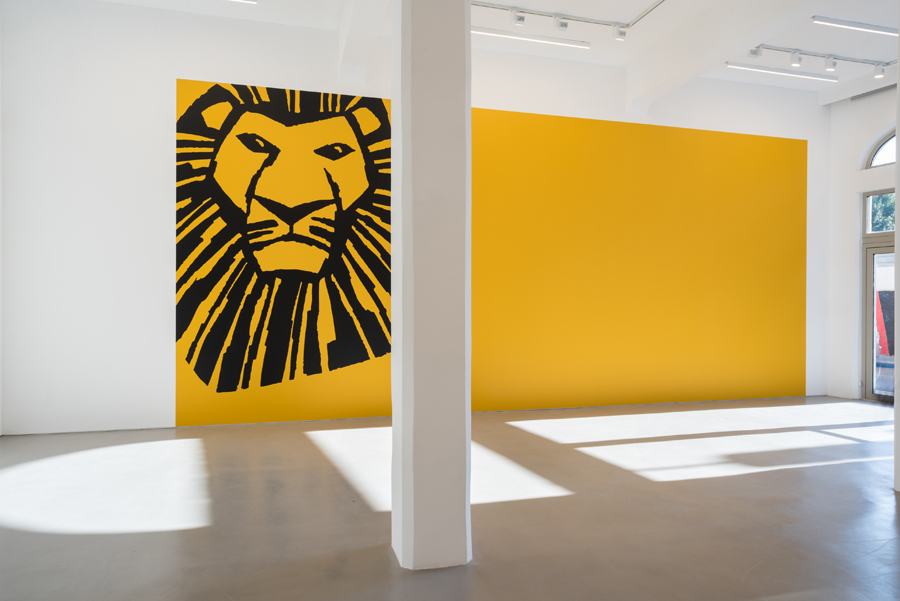
TS Why is there a pictogram of The Lion King on the wall?
HS The Lion King image, with this yellow ochre has been all over the place for a long time in New York City, for instance on trains advertising the Broadway musical. For 8 or 10 years I have ignored it. But recently I was on the train going to my son's school to do something for the benefit show with the 6th graders in his class. I wanted to do a print together, in which each of them will have an image, a pictogram. On my way to school, I am looking and there is a Lion King and I go - wow! Wouldn't that be a good example of a pictogram? It has been around for such a long time. It's the lion. And those who have seen the musical or the cartoon have a broader door to enter the story. This was maybe half a year before I had an exhibition in New York with Tanya Bonakdar (in 2016). There I thought to put it in the gallery, enlarge it into a field and call it a painting. See? This is how I work with objects. I encounter something that I never even considered to be an object and put among the objects.
Haim Steinbach, 'zerubabbel' runs at Magasin III, Jaffa, until 19 May.
Main image: Haim Steinbach, ‘zerubbabel’ (detail), 2018, installation view, Magasin III Jaffa. Courtesy: Magasin III Jaffa; photograph: Youval Hai











